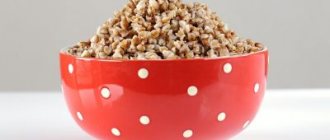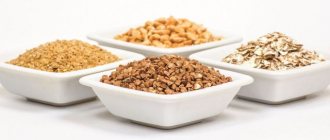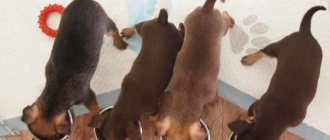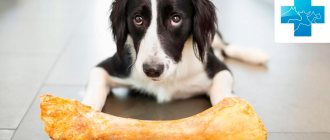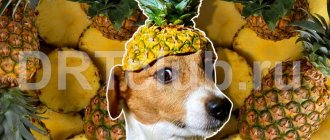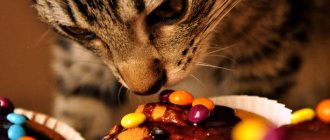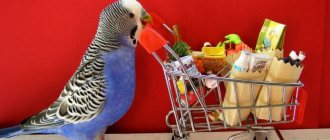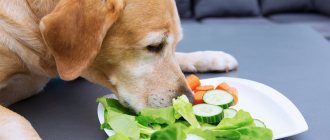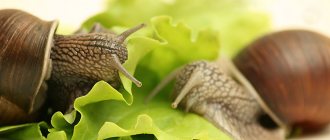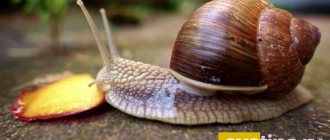Hello again, dear readers of our blog. You and I once studied what kind of cereals can be given to cats. This topic caused quite heated discussions, and we decided to continue it. Today we will talk about porridge recipes for cats. There are quite a few of them and they all deserve interest, since cats are great individualists. Someone may like some porridge recipe, but some cat will simply turn away from it. Therefore, in our today's selection of porridge recipes for cats and kittens, various porridges are presented.
Hercules porridge for cats with liver
Take the liver (you can take any that your cat likes), 2-3 glasses of water and a glass of oatmeal.
Boil water in a saucepan. Cut the liver into small pieces and pour into boiling water. Next we add Hercules. Mix everything thoroughly and wait for the porridge to boil. After this, close the pan with a lid and turn the heat to minimum. Stir the porridge periodically. Cooking time depends on the type of flakes and the size of the liver. Usually it is 2-3 times more than when cooking just flakes. There is no need to add salt or sugar. The finished porridge can be put in the refrigerator; the shelf life of the porridge should not exceed a week.
The animal is fed warm porridge. Once removed from the refrigerator, you can heat it in the microwave. If the porridge is thick, you can heat it up by adding boiling water. You can add dry milk to the finished porridge, mixing thoroughly.
Is it possible to feed a kitten semolina porridge?
Babies need to eat well to grow and get stronger faster. Semolina porridge is a high-calorie product that helps kittens gain weight. However, it can harm adult cats, causing them a feeling of heaviness in the stomach, nausea, and, if consumed regularly, obesity.
Any porridge can be given to animals from the age of one and a half months. It is recommended for babies to cook porridge from rice or rolled oats in milk. There is an opinion that semolina will help a baby who is emaciated after an illness to recover faster and gain weight. However, it is still better not to give semolina to a kitten, especially in combination with sugar or fish. An exception may be isolated situations when there are no other cereals at hand, but the baby needs to be fed. There is no need to add sugar to the dish; the consistency of the porridge should be liquid. Thick, sweet semolina with milk is so harmful that it can even kill a baby.
Meat porridge with vegetables for cats
Mix equal parts of buckwheat and short-grain rice and cook porridge from the cereals without salt in water. Separately boil the vegetable mixture. You can purchase it ready-made or make it yourself. To do this, you just need to mix potatoes, onions, broccoli, beans, cauliflower, green beans, carrots, peas and corn. Not necessarily all of these elements. The main thing is that there is no bell pepper in the mixture. We also separately cook chicken liver or beef heart, free of fat, or kidneys. We cut the chicken liver into small pieces, the rest must be passed through a meat grinder. Next, mix the vegetables, porridge and offal. You can add sunflower or flaxseed oil.
Barley porridge for cats with grated carrots and turkey breast
Cook barley (2 cups) as usual, but without salt. The cooking process can be speeded up by soaking the grains a day before. Cut the turkey into small cubes, put it in a bag and put it in the freezer. To prevent the pieces from sticking to each other, the bag must be shaken periodically. Take a small carrot, peel it and grate it.
Now take 4 tbsp. porridge, 1 tsp. grated carrots, 2 tbsp. turkey, scalded with boiling water and mix together. To soften the porridge, add 1 tbsp. boiling water Mix thoroughly and give to the cat. The proportions of barley porridge can be changed at your pet’s discretion.
Porridge with boiled chicken
Take the broth and add 2 tbsp to it. porridges like “Tsar Porridge” or “Nordik”, add boiled chicken, cut into pieces. Mix everything and heat for 15 seconds in the microwave.
That's all. If you know any other porridge recipes, please share them with our readers. All the best to you!
Industrial feed saves owners time and effort. According to numerous studies and quality tests, it has been found that many dry and canned pet foods contain harmful ingredients and do not meet the needs of vitamins and minerals.
Preparing homemade food yourself is the best option to provide your pet with everything it needs in its diet.
What grains are allowed to be included in a cat's diet?
People say oatmeal is one of the healthiest cereals, but cats don’t really like it. This porridge should be prepared with milk rather than water, then there will be more chances that your pet will like the dish. Hercules will provide the animal with good immunity, a healthy stomach and strong bones. What other cereals will be useful? The following types of cereals are best suited for tailed picky eaters:
- Rice. To prepare this nutritious dish, it is recommended to use unpolished cereals: they do not contain gluten and therefore do not cause allergies. Porridge made from it will improve your pet’s digestion and normalize stool. A tasty and healthy dish can be made from rice boiled in fish or meat broth. There is no need to add spices to it. If there are pieces of chicken, veal or fish in the dish, the bowl will be empty instantly.
- Pearl barley. This nutritious product is high in amino acids. Eating pearl barley helps improve the functioning of the gastrointestinal tract and prevent the development of allergies in the animal. Pearl barley contains many antioxidants, thanks to which it prolongs the life of those who eat it. Many cats also like barley porridge. Meat would be appropriate in this dish.
- Buckwheat. Cereals are very useful for cats. It is a rich source of proteins, carbohydrates, fiber, iron, calcium and other microelements. Buckwheat is eaten with chicken, veal, offal or fish; it is good on its own, without additives. Eating this dish has a positive effect on the health of the animal - it becomes more energetic and strong.
How to feed your cat properly with natural food
A healthy diet includes proteins, fats, carbohydrates, vitamins and beneficial microelements. In addition, the new menu should appeal to cats, who are considered a finicky animal when it comes to nutrition. If she refuses, there is no need to insist.
Remember that food you prepare yourself is only suitable if the following rules are followed:
- there are many ingredients of animal origin in the pet’s diet;
- nutrition is balanced;
- Make sure your cat eats the entire portion;
- It is necessary to add vitamins and minerals essential for health to the diet, including calcium and phosphorus in a 2/1 ratio.
Healthy foods for cats
It is very useful to add the hearts of different animals to your cat's diet. After all, this is one of the main sources of taurine, which serves as an essential amino acid for this animal. If about ten percent of your pet's diet consists of hearts, for example chicken, then dietary supplements in the form of taurine are not needed, otherwise you cannot do without them.
It is also recommended to include the liver, spleen, and kidneys in the cat’s menu, which will also be very useful. True, most animals do not like the taste, but they can be disguised by mixing them with vegetables and meat, after chopping them. For vegetables, give preference to spinach, pumpkin, and carrots. Remember that garlic and onions are toxic to cats and should not be given to them.
How to accustom a cat to new food
When changing your diet, a smooth transition is necessary. This way you can avoid digestive disorders.
Rules for transferring to a new diet:
- gradually reduce portions of the previous food;
- increase the amount of natural product;
- for training, use one recipe for homemade food, only after getting used to it, add new products;
- During the first days you should monitor your pet; if digestive problems arise, change the components of the homemade food;
- if you have a poor appetite, it is permissible to feed by hand or warm it up to a slightly warm state (the cat is a predator and for it the normal food temperature is the temperature of a freshly killed carcass).
You can switch the animal to natural food within 1-2 weeks.
Feeding rules
To keep your animal healthy, it is important to follow basic nutritional rules:
- The pet should be fed at the same time, 2-3 times a day. Kittens should be fed 5-6 times a day.
- Provide access to water around the clock.
- If symptoms such as vomiting, diarrhea, lethargy, or fever appear, contact your veterinarian immediately.
- After eating, the cat often requires rest; you should not disturb it.
- Uneaten food must be disposed of - it quickly deteriorates and becomes dangerous for the animal, in addition, with constant access to food, cats can overeat.
It is better to discuss the composition of homemade food with your veterinarian. He will suggest the most balanced types of nutrition, taking into account the characteristics of the pet. Food for kittens, adult cats or sterilized animals differs in composition. All ingredients must be fresh and of high quality.
What to do if the cat does not eat porridge?
It is easy to persuade your pet to eat porridge if you add pieces of meat. It should be boiled. You should choose lean varieties. When the pet refuses to eat such a dish, a little wet cat food or crushed dry food is added to it.
Be sure to read:
The best food for kittens: premium and economy class
At first, the animal may not eat the prepared food completely, but, gradually getting used to it, it will eat fully. Feeding porridge should be regular.
Natural cat food: recipes
Preparing homemade food will take time, but the owner can be confident in the result, since it will not contain preservatives, dyes or harmful additives.
How to prepare dry cat food: 3 recipes
Recipe No. 1.
Ingredients:
- 1 kg turkey hearts;
- 1 kg chicken stomachs;
- 300 g chicken liver;
- 4 things. chicken necks;
- 2 chicken eggs;
- 100g carrots;
- 200g zucchini;
- 100g beets;
- 200g rice;
- 3 tbsp. spoons of vegetable oil.
Cooking algorithm:
- Boil cereals and hard vegetables.
- Boil the meat.
- Grind everything in a meat grinder or chop using a blender.
- Place on a baking sheet lined with foil.
- Place in the oven at 100°C for an hour and a half.
The food should not be baked, so you need to make sure that the temperature in the oven does not rise above 100°C.
Recipe No. 2 is prepared in the same way, but the components are different:
- 1 kg of beef or chicken;
- a glass of oatmeal;
- boiled chicken egg - 1 pc.
Recipe No. 3
- chicken or beef heart - 1 kg;
- a bunch of parsley or dill;
- 1 tbsp. l. olive or flaxseed oil.
Finely chop all ingredients and mix.
You can prepare several options and alternate them so that your cat’s diet is more varied.
Homemade natural dishes: 7 recipes
Recipes for homemade natural food are varied. You can prepare both a fish menu and a meat menu, depending on the cat’s preferences.
Salmon with rice.
- steam 150 g salmon;
- half a hard-boiled egg;
- a third of a glass of boiled rice;
- calcium carbonate tablet;
- vitamin-mineral complex tablet.
Mix everything and serve.
Chicken with rice and vegetables
- 2 cups chopped chicken meat;
- a glass of cooked brown rice;
- a quarter cup of boiled and grated carrots.
Mix chicken with rice and carrots and heat slightly.
Food for capricious pets
- a glass of boiled chicken;
- ¼ tbsp. steamed asparagus cabbage;
- the same amount of grated carrots;
- half a cup of chicken broth.
Mix everything, warm it up a little and serve.
Liver and kidneys
- a glass of boiled offal;
- ¾ tbsp. boiled oatmeal;
- a quarter cup of carrots;
- a third of a glass of natural yogurt;
- 3 tbsp. l. butter.
Mix minced liver and kidneys with oatmeal and vegetables. Melt the butter and pour it into the mixture. Add yogurt. Serve at room temperature.
Chicken with broccoli
- half a chicken breast;
- 2 pieces of broccoli.
Boil everything and mix until smooth.
Meat with cottage cheese
- 100 beef;
- 1 tbsp. l carrots;
- 1 tbsp. spoon of cottage cheese;
- 1 tbsp. l vegetable oil.
As in previous recipes, mix everything and you can give it to your cat.
Chicken with potatoes
- 100 g boiled chicken without skin;
- a quarter cup of mashed potatoes;
- half a teaspoon of butter.
Serve at room temperature.
These are healthy food recipes that will help provide your cat with all the vitamins and nutrients.
Food for sterilized cats and neutered cats
Sterilized cats and neutered cats have some nutritional characteristics that are always taken into account when making industrial food. This group of pets is prone to obesity. This means that the fat content in homemade pet food should be reduced.
Sterilized pets are prone to urolithiasis, so it is necessary to add components to the homemade food that facilitate the complete removal of fluid from the body. It is optimal for prevention to increase the amount of protein, since it acidifies the urine and prevents the formation of stones.
About the benefits of cereals
The cat, although small, is a predator. And in nature, representatives of the cat family do not feed on cereal grains, but receive them along with the contents of the stomachs of small rodents that have become the prey of a mustachioed hunter. If you feed a cat only meat, you can get a whole bunch of diseases - digestive, cardiovascular systems, liver and kidney dysfunction. Therefore, your domestic cat’s menu should include cereals – a source of fiber, complex carbohydrates and vitamins.
Cereals in a pet's diet can be represented by porridge. But not all of them are good for cats. The following types of cereals are desirable:
- Buckwheat. Buckwheat porridge will help maintain a strong immune system, cardiovascular and nervous systems, normalize gastrointestinal functions; it is beneficial for skin health and improving the appearance of the coat. Buckwheat contains a lot of easily digestible protein, so it is very nutritious. Buckwheat is rich in vitamins - groups B, E, PP, microelements - calcium, iron, phosphorus, iodine, cobalt, copper.
- Rice. The cereal does not contain gluten, so it can be safely given to animals prone to allergies. Rice porridge in a cat's diet is a source of calcium, potassium, iron, iodine, selenium, and zinc. It contains vitamins B, E, PP. Rice helps maintain the functions of the cardiovascular and nervous systems, strengthens the cat's immunity, and normalizes digestion.
These cereals can be given to pets without danger to their health. Other grains are also useful - oats, barley, but when including them in a cat's diet, possible contraindications should be taken into account.
Veterinarians recommend Hercules porridge for pets because of its natural antioxidant content. Oatmeal contains vitamins and minerals necessary for animals, including calcium, magnesium, iron, phosphorus and others. It is useful to give oatmeal to animals to strengthen bones, prevent anemia, and normalize stool during diarrhea. Porridge is well absorbed by the cat's body, but it should be taken into account that oats contain gluten. Not all animals produce enzymes in their bodies that can break down this protein, which leads to disruption of the functions of some body systems. In addition, gluten often causes allergic reactions in animals.
Two types of cereals are made from barley - pearl barley and barley. They are rich in vitamins A, B, D, E, nicotinic acid, microelements - calcium and iron, potassium and manganese. Barley porridge improves the functioning of the digestive system and has a beneficial effect on bones and joints, vision, and the nervous system. But pearl barley and barley porridge are contraindicated for those animals that have gluten intolerance, as well as cats suffering from chronic constipation.
What not to feed a cat
Often owners try to feed the cat what they eat themselves. This has a detrimental effect on many systems of the cat’s body, primarily on digestion.
The following foods are prohibited for cats:
- any chocolate provokes tremors, convulsions and even death;
- garlic or onion;
- sugar in any form;
- nutmeg;
- raw dough;
- products with caffeine (there are cases of poisoning);
- raisin.
Some owners are replacing commercial cat food with dog food. This cannot be done, since the ratio of nutrients and microelements in these products is different and they are not suitable for a cat.
Small bones can injure the esophagus, and raw fish provokes infection with helminths.
A cat should not eat raw potatoes and cabbage, since these vegetables, when raw, cause stomach cramps.
Homemade food is nutritious and balanced. The owner will have to spend a little time, but the pet will receive good nutrition with the necessary vitamins and microelements.
It is advisable to first consult with a veterinarian to select the optimal ingredients that are beneficial for your cat’s health.
Ready-made cat food is now easy to purchase at any pet store. They are convenient to use if the owner is at work all day and sometimes doesn’t even have time to prepare food for himself; besides, dry croquettes can be left in the feeder for the whole day without fear that the food will spoil. However, many pet owners prefer to switch their pets from commercially prepared food to a natural diet.
Why is it better to cook for cats yourself?
Making your own cat food is not difficult at all. After all, although industrially produced food makes our lives much easier, they often contain ingredients that cannot be included in the diet of our pets. That is why every year there are more and more people who prefer a natural diet prepared in the home kitchen to commercially produced food.
Food specially prepared for a cat from healthy and fresh ingredients does not necessarily have to be the basis of his diet. You may be feeding him store-bought food more often, but it’s still worth making a healthy and enjoyable addition to your pet’s diet. And if you have enough free time, then the cat can be completely switched to food that you prepare yourself. It will be more natural than any food you can find in a pet store. But remember that you cannot simply feed your cat the same food that you yourself eat for dinner; these pets have dietary habits that must be observed. Therefore, you will have to cook for them separately.
Composition of diet for cats
A cat is a predatory mammal of the cat family. Like all predators, it mainly feeds on meat. Meat products should make up up to 80% of a cat's daily diet, of which 10% can be in the form of offal. Any meat can be used, only pork in limited quantities - it is harder to digest and contains a lot of fat.
The remaining 20% of the cat's diet should be vegetables, grains, potatoes, legumes, herbs, eggs (2-3 per week, no more). Vegetables for cats include cabbage (Brussels sprouts, broccoli, cauliflower), carrots, spinach, celery, pumpkin, and zucchini. Whatever your cat prefers, put it on the menu. Onions and garlic should not be given to cats - these products are toxic to cats. Homemade food should contain a sufficient amount of vitamins and minerals, so it is recommended to add vitamin-mineral pills or tablets for cats recommended by a veterinarian to ready-made meals.
It can be difficult for a cat to immediately switch from canned food to a natural diet, so it is wiser to start by giving her wet canned food; they are closer to homemade food in appearance and taste. If there are other animals in your house (for example, a dog), you will have to prepare food for the cat separately, since the composition of the diet for them is different: the cat needs much more protein. There are quite a lot of simple recipes for dishes for cats, at least some of which your pet will definitely like.
Do felines naturally eat any grains?
In the wild, cats do not eat grains, but they do feed on small animals and birds, which they ingest along with feathers and stomach and intestinal contents. The gastrointestinal tract of all representatives of the cat family is adapted to digest animal food, so pets should be offered chicken, lamb, beef, rabbit, and offal.
Cats living at home can easily eat cereal. They are necessary as a source of carbohydrates, as well as micro- and macroelements. Not all grains are good for carnivores. Some of them can harm the animal's body.
Meat dishes
Meat serves as the main source of proteins and fats. Chicken, turkey, and beef are suitable for cats, but it is advisable not to give pork to your cat often.
Raw chicken with vegetable pilaf
For pilaf you will need: 1 cup of brown rice, two large carrots, several stalks of celery and a cup of green peas or green beans. Pre-steam the rice, grate the celery and carrots on a coarse grater. Pour 2 cups of boiling water over the mixture of rice and vegetables and cook for 20-30 minutes. Cool the finished pilaf to room temperature, add 2 tbsp. vegetable oil (preferably olive oil). This amount of pilaf is enough for several feedings; it can be stored in the refrigerator for 2-3 days. Before giving the cat the required portion, you need to add raw skinless chicken fillet cut into small cubes to the vegetable pilaf.
Chicken with mashed potatoes and eggs
Boil 2 potatoes cut into pieces, cool to room temperature. Place in blender, add 1 tsp. butter, 100 g raw chicken, 1 egg. Mix the ingredients until pureed. This dish is great for small kittens and old cats. If you use boiled chicken, this food can be prepared for future use, for a couple of days, and stored in the refrigerator.
Meat with broccoli puree
- raw beef - 100 g;
- broccoli or cauliflower - 50 g;
- vegetable fat - 0.5 tsp;
- calcium gluconate - 1 tablet.
Cut the beef into small pieces, separate the cabbage into florets, boil and grind in a blender, grind the calcium gluconate tablet into powder. To prepare the dish, you can use canned cabbage from baby food. Mix everything, pour oil on top.
Meat pancakes
Grate a small carrot, 100 g of frozen chicken fillet or beef meat on a coarse grater (you can use ready-made minced meat). Add a calcium gluconate tablet, a handful of finely chopped nettles or lettuce, ¼ cup green peas, 1 raw egg. Form small cakes and bake in the oven or microwave - lightly, just so that they do not fall apart. These pancakes can be stored in the freezer and warmed in the microwave as needed.
What do you need to prepare cat food?
To prepare a cat's dinner, you don't need any special equipment. In the kitchen you will need to have a food processor, blender, and meat grinder, because most products will have to be chopped. There is a basic formula for a cat's diet - half protein (mostly found in meat) and a quarter each of vegetables (they contain fiber) and carbohydrates (these are grains). A large amount of protein is found in chicken, turkey, rabbit and fish. The most optimal source of carbohydrates for animals is brown rice, and for vegetables you will have to rely on what your pet agrees to eat. In your diet, use both boiled and raw meat, mixing it with boiled vegetables and rice.
Fish dishes
Fish contains minerals, essential amino acids, is rich in fat-soluble vitamins, and, like meat, serves as a source of protein. The following are suitable for preparing cat dishes: pollock, hake, cod, mackerel, pike, salmon, halibut, trout. Low-fat fish is an excellent food option for overweight cats, but due to its low calorie content, it is not recommended for pregnant and lactating cats, as well as kittens.
Salmon with rice and egg
Separate 100-150 g of salmon from skin and bones, cut and stew or cook in a double boiler. Boil ¼ cup of rice until it becomes a mushy porridge, hard-boil 1 egg and finely chop. Mix everything, add a couple of tablespoons of vegetable fat, a few finely chopped sprigs of dill or parsley, a tablet of vitamin-mineral complex or calcium gluconate. This dish can be prepared for future use and stored in containers or bags in the freezer.
Fish dish for gourmets
Boil the fillet of sea or river fish and cut into small pieces. Cook the rice like regular porridge, grate the raw carrots. Mix all ingredients, adding sprouted wheat and olive oil. For one serving of the dish you will need:
- 250 g fish fillet (it can be replaced with a can of canned fish in oil);
- 4 tbsp. rice;
- 1 small carrot;
- 1 tbsp. sprouted wheat;
- 1 tbsp olive oil.
Shrimp salad
- 0.5 cups of small shrimp or 4-5 large pieces;
- 1 medium sized carrot;
- 0.5 hard-boiled egg;
- 1 tsp olive oil.
What foods can be given to a 7-9 month old baby?
Now the baby can be seated at the common table during family meals. Several reasons why homemade baby food is better than store-bought food:
- you know exactly what ingredients are in the dish;
- the child gets used to your cooking.
If you are breastfeeding, your baby may be able to taste the food you eat. Therefore, he will most likely quickly get used to the food that you prefer.
A baby of this age can already be given mashed or finely chopped food instead of puree. It was noticed that children who were given heterogeneous food after 10 months rejected it more often. Such children become more picky, and in the future it is more difficult to persuade them to try food with a new taste or texture.
A significant portion of a child's diet should consist of starchy foods. For example: porridge, baby bread, potatoes, couscous, bread, pasta, rice. But, of course, starchy foods should be supplemented with protein. You can give your child something from this list:
- fish (not shark, swordfish or marlin);
- hard-boiled eggs;
- dairy products;
- lean red meat;
- bird;
- legumes
If your child eats a lot of beans and lentils - for example, if you follow a vegetarian diet - be sure to give him bread, rice or pasta. Too much fiber can make a small stomach feel full, and your baby may not be able to absorb other important nutrients.
If your child likes to eat small pieces and take them with his hands, encourage him. Perhaps he likes to feel that he is in control of the process. Try giving your baby boiled green peas or carrots, cubes of cheese, slices of banana or soft pear.
The child may still drink a lot of milk, but this does not stop him from trying other drinks. Give him cooled boiled water from a glass with a soft spout. If you decide to give your child fruit juice, save it for lunch and dilute it with water in a ratio of 1 to 10. It is better to pour the juice into a glass or sippy cup, rather than into a bottle. Giving your child juice with their meals helps them absorb iron from foods, and their growing teeth are less affected as a result.
You can supplement your baby with formula milk after meals. But this is not necessary if you have a balanced diet.
Read our article on complementary feeding from 7 to 9 months. You can get fresh ideas from our recipes for children of this age.
Offal dishes
The internal organs of animals and birds are very useful for cats. They contain proteins, fats, essential amino acids (including taurine, which is so important for the cat’s body), vitamins and minerals. If your cat is reluctant to eat liver, heart or kidneys, these by-products can be included in meat or fish dishes, or their taste can be masked with grains or vegetables.
Tender pate from chicken by-products
To prepare a portion of pate you will need:
- 200 g chicken giblets (heart, liver, gizzards);
- 1 tbsp. butter;
- 1 carrot;
- several sprigs of parsley or celery.
Lightly fry the giblets in oil, boil the carrots. Pass everything through a meat grinder and add finely chopped greens.
Liver with cabbage and oatmeal
The recipe is for 4-5 servings. The pilaf can be put into bags and frozen, then you can only take the bag out of the freezer and warm its contents.
For the dish you will need:
- 0.5 kg of liver (chicken, rabbit or beef);
- 1 cup oatmeal;
- 0.6 cups of broccoli or green peas;
- 2-3 tbsp. sunflower or olive oil.
Boil the liver and cabbage and cut into small pieces, steam the oatmeal with boiling water. Mix everything, adding vegetable fat.
Stew from offal and vegetables
For 4-5 servings of the dish you need to take:
- 0.5 kg of chicken giblet mixture;
- 1 small carrot;
- half a medium-sized zucchini;
- 1 glass of pearl barley, buckwheat, oatmeal or corn;
- 2-3 tbsp. l. olive oil.
Make minced meat from raw offal, grate the vegetables on a coarse grater, and cook the cereal. Mix everything, add oil. This dish can be prepared for future use and stored in the freezer, packaged in bags.
Soups should be an integral part of a cat's natural diet. The body of these predators needs fiber, which is contained in boiled vegetables and grains, and during the cooking process, many useful substances pass from meat or fish into the water. Cats suffering from stomach or intestinal diseases and small kittens especially need warm soups.
Meat soup with semolina and yolk
100 g of meat scraps or chicken, a small washed and peeled carrot, pour 0.5 liters of water and cook for half an hour. Then, stirring vigorously, add 1-2 tbsp semolina, 1 tsp. butter, raw yolk, keep on fire for another 5 minutes. Before serving, the meat can be removed from the soup and finely chopped with a knife.
Diet chicken soup with broccoli
Boil chicken meat (about 100 g) in a glass of water, cook several broccoli florets in a double boiler. Grind the ingredients in a blender until pureed, pour in lukewarm broth, add 1 tsp. butter. This dietary dish is enjoyed by both adult cats and kittens; it is also recommended to be prepared for picky cats who have a habit of eating meat and leaving vegetables in the feeder.
Low calorie fish soup
Low-calorie dishes are recommended for spayed and neutered animals, as well as for old cats prone to obesity. To prepare fish soup you will need:
- 0.5 l of water;
- 100-150 g of lean fish (hake, pollock, pike);
- small carrot;
- 2 tbsp. any cereal;
- ¼ tbsp. sunflower oil (optional).
Cut the fish, cook over low heat along with cereals and grated carrots for 0.5 hours. Then remove the fish, remove the spinal bones, cut and return to the broth.
Cream soup with meatballs
- minced meat (any except pork) - 100-150g;
- rice - 1-2 tbsp;
- carrots (small piece);
- green beans or green peas - 2 tbsp.
Method of preparation: cook rice and vegetable soup in 0.5 liters of water, 10 minutes before the end of cooking, add small meatballs formed from minced meat. Remove the meatballs, beat the rest with a blender, then return the meat balls to the soup. There is no need to crush them; the cat will prefer to take out whole pieces of meat from the soup.
What foods should not be given to a child under one year old?
Some foods should not be given to a baby if he is under one year old:
- Salt. The baby's kidneys cannot cope with salt yet. In addition, it is generally better not to accustom him to salt for as long as possible. Do not give your child mashed foods prepared for adults if they already contain salt.
- Honey. Even if the baby has a cough, he should not be given honey until he is one year old. It may contain bacteria that are toxic to your baby's sensitive intestines.
- Sugar. If you wish, you can sweeten the dessert with mashed banana or puree of soaked dried fruits.
- Artificial sugar substitutes. Diet drinks and ready-made porridge containing artificial sugar substitutes are not suitable for a child. They are not nutritious at all and only provoke a love of sweets.
- Whole nuts. The child may choke.
- Certain types of fish. A child should not be given shark, swordfish or marlin meat. These types of fish may contain mercury.
- Tea or coffee. Do not rush to add tea to a bottle of milk. The tannin contained in tea can interfere with the absorption of iron from food. Do not give your child any drinks containing caffeine.
- Low-fat foods. Butter, yoghurt or low-fat cheese are not suitable for a child. Give your baby foods that contain the usual amount of fat. He needs calories.
Some foods can cause poisoning. To play it safe, do not give your child:
- soft blue cheeses, such as camembert or brie,
- raw or poorly processed seafood,
- soft-boiled or raw eggs,
- liver paste.
Useful materials:
- Cutaneous horn General description of the disease Cutaneous horn on the forehead or face (ICD 10 code - L57.0) -...
- The cat has cancer Stages of mammary gland cancer in cats Like in humans, cat mammary cancer has ...
- Itching and odorless discharge Main causesBefore considering the factors that provoke the appearance of discharge that has a sour odor, it is necessary to immediately note...
- Normal temperature in animals Normal temperature in different types of animals Veterinary services Day hospital for animals Veterinary certificates Vaccination…
Homemade croquettes
If you want to pamper your pet, who is accustomed to ready-made dry food, you can make croquettes yourself. They taste just as good as store-bought ones, but are certainly much healthier and safer, since they do not contain any preservatives or artificial flavor enhancers. This delicacy is easy to prepare: the ingredients are crushed in a blender, mixed, the resulting mushy mass is spread in a thin layer on a baking sheet and baked in the oven at 100° for about 20 minutes. Then the still soft layer of food is divided into small pieces and dried in the oven for another hour. Here are several options for a food kit for making homemade dry food.
- minced beef - 0.5 kg;
- beef or chicken liver - 0.2 kg;
- boiled rice - 1 cup;
- calcium gluconate - 4 tablets;
- vegetable fat - 1 tbsp.
- beef liver - 0.5 kg;
- oatmeal - 1 cup;
- eggs - 2 pcs.;
- fish oil - 1 tbsp. l.
- chicken or beef heart - 0.5 kg;
- chicken liver - 0.3 kg;
- boiled carrots - 150 g.
- unsalted crackers - 300 g.
If you feed your cat properly, she will be healthy, active and look good. It is up to the pet owner to decide what to feed it - home-cooked meals or ready-made croquettes and canned food. It takes more time and effort to organize meals at home. But cats, like people, appreciate showing attention and love, and they are often more willing to eat food prepared especially for them. And fresh food made from healthy ingredients, even if it alternates with canned cat food from the store, will be an excellent addition to your pet’s diet.
Delicious homemade croquettes with your own hands: video recipe
Canned cat food
One of the most common cat foods is sold in canned form. Surely not everyone knows, but making canned food for cats with your own hands is quite possible, although you will have to face some difficulties. The fact is that the entire technological process will need to be followed so that bacteria do not appear in them, and besides, the meat must first undergo heat treatment. Such canned food must be prepared in glass jars with a capacity of 0.5 to one liter. They should be closed with tin lids. The jars are thoroughly washed and boiled beforehand.
The meat and broth that you will use must be placed in the jar hot, and at least two centimeters must be left between the canned food and the lid so that the jar does not “explode”. Once you have sealed the jar, it should be sterilized in a large saucepan, pressure cooker, or enclave at 115 to 120 degrees. This takes from one and a half to two hours. Please note that the jars should be immersed in already warm water. After cooking, canned fish and meat should be stored at a temperature of 10 to 15 degrees Celsius.
